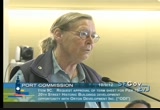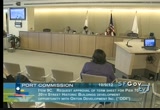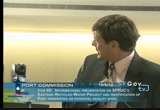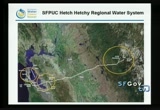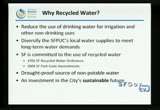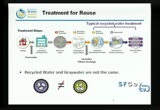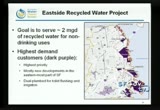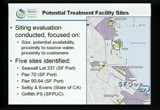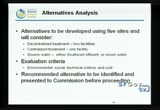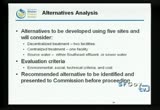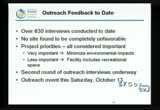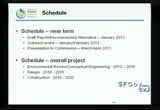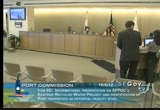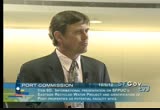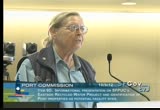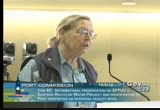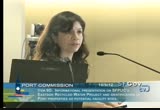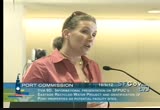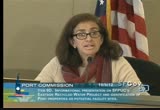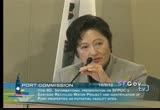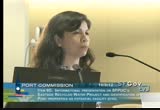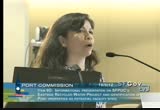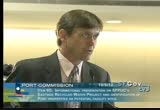tv [untitled] October 10, 2012 10:30pm-11:00pm PDT
10:30 pm
some of the problems with the historic buildings wanting to get fast moving as fast as possible so they don't crumble and reuses that will activate the 20th street corridor and i urge your support. thank you. >> thank you. commissioners, any comments or questions before we vote? >> i want to thank orden development and also the staff and others, kathleen. kathleen i know you have worked on this very unique and interesting project and i am certainly excited to see this step in the process come forward and i am very excited what will be coming next and i wanted to thank everybody involved and being
10:31 pm
creative and get this project moving forward. >> i just want to add -- [inaudible] i think you could see that this term sheet is fairly detailed, i guess, and this is as a result of a lot of conversations and discussions that the staff has had and i think some of the commission in terms of the direction we have given you and we are pleased to see where are at this step today and hopefully this project will move forward. so with that all in favor? >> aye. >> aye. >> resolution number -- sorry, i have to go back. resolution 1278 has been approved. and i see mr. orden and james madison in the back. congratulations. thank you. >> item 9d informational presentation regarding the sfpuc
10:32 pm
recycled water project and identification of port properties as potential sites. >> good afternoon commissioners. brad benson special projects manager. i am here representing port that is working on this project. byron rhett is helping me out and we have representing the san francisco public utilities commission today donna palassos and others. essentially the public utilities commission is in the process of diversing the public water supply and looking at recycled water at fulfilling some of the city's water needs and have approached the port at looking at a number of port sites that could potentially where they could build a recycled water plant on the east side of the
10:33 pm
city. they're looking at other sites as well and barbara is here to give a policy overview of the project, some of the siting considerations, the process -- the public participation process they're in right now and i will talk about next steps so thank you barbara. >> thank you. i am barbara palassos and a project manager with the sfpuc and i am here here'd to give you a introduction about this project of the i will talk about the water portfolio and the water program we're implementing here in san francisco. provide more details for the east side project. the sites we are considering and this project that we think is part of this project being successful and moving forward. as you know we provide drinking water to 2.6
10:34 pm
million people in the bay area and includes all of san francisco and the 27 wholesale agencies outside of the city. the water is conveyed through pipelines and tunnels and we have several treatment plants. to make the system reliable and less vulnerable to earthquakes we are implementing our water system improvement programs and projects to upgrade this compl system. in 2008 this was certified by the san francisco planning commission. as part of this program eir approval the sf puc limited to water deliveries to the current level of 265 million-gallons a day and for the city of san francisco this meant developing 10,000-gallons a day of alternate water supplies here in the city. to meet this goal
10:35 pm
we're pursuing additional water conservation measures to reduce demands on drinking water and developing new sources of supply including groundwater which would be used to augment the drinking water supply and recycled water used for non drinking uses and irrigation and toilet flushing. in san francisco we're moving forward with the implementation of our program. we have three projects here in the city. we have the harding park project and the reservoir and pump station that is used to pump water produced by daly city and we have the next water project and produce 1.6 million-gallons of recycled water for golden gate
10:36 pm
park and presidio park and the golf course and we have a project to deliver 2 million-gallons a day of recycled water. so again just to circle back as to why we're doing recycled water. recycled water lets us devote drinking water for the highest purpose which is drinking, and using recycled water for irrigation and toilet flushing just makes sense . the city of san francisco is devoted to this project and began in 1991 with the recycling ordinance and had large developments have this type of pipe for this. it was endorsed again in 2009 with the park amendments which called for maximizing water use efficiency and using non portable water on park properties. recycled
10:37 pm
water is reliable and drowft proof and we believe it's an investment in the city's future. the recycled water is highly treated wastewater. it goes through several steps to make it safe and for irrigation and non drinking uses. under a typical process wastewater is treated at the wastewater treatment plant which on this side of the city is the southeast plant and under go primary and secondary treatment. the product is called secondary and discharged into the bay. we take a side stream of that and treat it. you may have heard the term scaffolding plant and treatment plant and take it directly from the sewer and include all of
10:38 pm
the treatment steps to produce the recycled water including the first two steps that happen at the southeast plant. you may have heard gray water. gray water and recycled water is not the same thing. gray water is from laundry machines and others and has soap but considered safe enough for plants and residents can install a gray water system for their own on site use. so zooming in on the east side as part of the early planning work we look for potential customers and estimate the demands for non drinking water. the highest demand customers are shown here in dark purple and in the eastern part of the city and in the most part within the recycled water ordinance zone which is designated by the red line, so in essence these are customers that have or will be
10:39 pm
dual pump d in accordance with the ordinance and we identified them as the priority customers. now that we know who we're planning on serving the next step in the process is look at potential sites for the facilities. for the siting evaluation we looking at parcels at least an acre in size, currently vacant and no buildings or structures, again close to the priority customers and mine myself pipelines through the city streets and close to the source of water to be treated. we eliminated parcels that are current or open future space or parks and we contacted property owners to confirm availability or the potential to go with development plans so these are the five sites identified and include
10:40 pm
three port properties listed here. the state owned parcel here and sfpuc own griffith's pump station. the next step in our planning process is to conduct what we call alternative analysis and the goal here is to identify preferred alternative to advance conceptual engineering and environmental review. alternates will be developed for the five sites, and we will consider the concept of decentralized treatment which would basically require two facilities, one in north and one in the south that would serve all of the customers we have identified. centralized treatment which would have one facility that would serve all of the customers and we would also consider different treatment options. basically we would look at treatment that would
10:41 pm
take it from the southeast plant and filter that and produce the recycled water and we would look at treatment that would treat wastewater directly from the sewer or plant . the alternatives would be evaluated using environmental social and technical criteria along with costs and again the goal is to identify preferred project or a preferred alternative that we can move forward, and if the results of the analysis indicate that a port site should be considered as the preferred alternative, we would of course return to the port commission for port concurrence before we move forward. public involvement has been a critical part of our project. we've put in a lot of effort to make sure that the public is informed of the project and the sites we're considering. we have been talking to the public about this projected since summer of 2011
10:42 pm
and we continue to outreach with open house sessions that we held last november. we also held workshops in january and march of this year and this year we also started using a new tool to reach more people and we're calling that digital outreach and basically ipad based survey we're using on one and one interviews on the streets and at special events and there is an online version of this survey. this digital outreach has helped us connect with hundreds of people about the project, and again our objectives for setting up this tool were to provide information and increase awareness about the project, to gather input and hear concerns that people have on the proposed sites and we wanted feedback from the community on what the priority should be when developing a project of this nature. folks
10:43 pm
were asked about the importance of minimizing environmental impacts, minimizing project costs, designing the facility to fit in with the surroundings and providing community and recreational space as part of the project. to date we actively communicated with over 630 people on the project. no site has been found to be completely unfavorable and at the same time no site is a definitive proposal. we think that this is good because at this point it suggests we could likely make any of the sites work from a public perception or public acceptance standpoint. and in terms of priorities most people rated the issues we presented to them as somewhat important to important. the public did assign more importance to minimizing
10:44 pm
environmental impact and slightly less on providing recreational space or amenity near the project. we have a second round of interviews on the way and have an event this week and joining in with the southeast community health fair. we will have a set up there for people to learn more about the project and provide feedback. in terms of schedule our project team is working on developing those project alternatives including preliminary layouts for each site, the goal of which is to develop and have that recommended alternative early next year in january. we do plan to circle back with the public to let them know the conclusion of the process, and again if one of the recommended -- if the recommended alternative -- or one of the recommended alternative it is
10:45 pm
include a port process we would come back to you before. in terms of the schedule this is our timeline. we are looking to go to construction around 2018. that concludes my presentation. >> thank you. >> thank you barbara and if the commission has any questions i would yield the mic to you, but just in terms of port staff next steps. both the lot and portions of pier 70 are under exclusive negotiating agreements. 337 with the giants team and mission rock llc and pier 70 with horton development incorporated in california. we
10:46 pm
would -- we've already broached this topic with both of these groups. we would continue to have that dialogue with our development partners to see whether or not a facility such as this would work into the development plans for those sites and make sense from a feasibility perspective, a cost perspective, a engineering perspective. with respect to the pier's areas and the preliminary port staff feedback is disfavor that site compared to the other two sites, but we want to respect the puc's process foresting sites and will bring it back to the commission for consideration. >> >> and we look forward to seeing the results of the public process so really appreciate the work of the staff on the
10:47 pm
project. >> okay. public comment? corin woods before we take comments or questions from commissioners. >> good afternoon commissioners. i am wearing a different hat here. i chair the mission bay citizens advisory committee for what was the redevelopment agency. now, to be known as -- i think the office of community infrastructure and investment. that's tentative. we had purple typing in mission bay since the beginning of the project and have been waiting for recycled water to run through those pipes and we have been participating in as much as we could in the process of moving forward the recycled water plan. public
10:48 pm
outreach has been spotty. the online survey -- i can't get to. the opportunity to go to the bay view health fair is a tremendous opportunity to find out what is going on, but it has not been widely advertised. nor has there been real discussion about the cost comparison of doing the treatment near the southeast plant and piping it back out versus doing the treatment near sea wall lot 337 or pier 70 or mission bay where we're going to be using the recycled water, and having to do less piping once you get it. there's a lot of questions. i don't know how this would fit in with sea wall
10:49 pm
lot 337 or pier 70 if you need a acre of land. i really want this to happen as soon as we can get it because obviously using recycled water for irrigation and other non portable uses is a critical part of reducing using hetch hetchy water for non portable uses but i think there is still a lot of questions. please ask them. thank you. >> thank you. other public comment? commissioners questions? comments? >> i am in favor of the project moving forward. brad benson answered the question i was going to ask with respect to what we have in place on those two sites. i'm not sure -- did
10:50 pm
you provide a bit more of a timeline in term of what decisions are made, how much more public outreach might take place? and any other major steps? >> so the timeline for decisions would be approximately march or april when we have a preferred alternative that we would like to have hopefully endorsed by the port commission if it involves a port property, and if not by our commission -- in either case the puc and want their endorsement of the alternative before we move forward with environmental review and conceptual engineering so that's the time frame. >> i guess i was getting at more opportunities for public outreach and have the public weigh in and even if you wouldn't mind investigating the issue whether it's been difficult for people to get access to the online survey.
10:51 pm
>> we only know of one person that had an issue and internet explorer -- i'm not technical but it was that issue and i thought it was resolved but we can try and address ms. wood's issues. >> in brief it's an old version of internet explorer and doesn't allow access to the site is my guess. >> we thought it was resolved. we emailed folks and the list was 1600. we have a email list of 1600 stakeholders and did that twice now. so we will have melissa come up and talk about the issues. >> thanks for taking the time and we have done emailing on the latest update on the five sites
10:52 pm
about 1600 people. we are doing another update to them in advance of the southeast health fair. we did a mailing as well which was a full scale eight and a half by 112 sided mailer and went out to 12,000 people and within approximately 500 feet of each site and more around the southeast site because of the health fair and we did 600 surveys and all of those primarily were around the site locations. we are continuing to do those surveys and in fact that ipad survey, that digital survey is the same one online so as an example if ms. woods can't access it we can arrange that on the ipad and that is what is available on the health care on saturday and we have a blog for this projects and others you can subscribe to and get updates so
10:53 pm
it's active, visual, friendly for the public communication tool. we found it works well with the construction projects for the water improvement program so we're using the same model for this and as we come to next steps, updates or availability of reports, anything that of nature and they can comment on the blog as well. >> so the final point in terms of potential advantages of having the site located closer to the points using the -- having the greater usage of the recycled water does that factor in at all? does that make sense, the pros and cons of that? >> yes the purpose of the alternative analysis is look at these options and develop costs we will know is it more expensive at one plant and run the pipe or more cost effective
10:54 pm
to have it closer to the site and that is all part of the alternative analysis. >> following up on that question and i want to understand better your kiet. you have five sites and i understand you will look at each one and determine the costs but what are the primary buckets of criteria that will narrow it down? you mentioned the community's perception is one and i don't know how much that weighs. cost is another but i'm trying to figure out how you're going to get down to narrow down the site and whether there is also a financial -- obviously a financial analysis which i have some other questions but anyway answer the question. is there a way to tell us the criteria used to narrow down the sites? >> we haven't finalized the criteria but the buckets are environmental, technical and these and environmental we will look at neighborhoods impacted
10:55 pm
by the facility, truck traffic, air quality -- environmental is air quality, greenhouse gas e emissions and historic resources. from a technical perspective the different treatment options have different nuances. satellite plants will likely have less pipelines but they have their own operation issues that make them more cumbersome to operate whereas -- now, i feel i'm getting in the weeds and we can always come back to you with the evaluation criteria if you're interested. >>i think we're trying to understand at a general level, and i guess the other question is the design of these. i guess part of is how is it going to fit in -- i mean it's probably an exaggeration but know in the old days .
10:56 pm
what these plants look like and whether they fit in what is being designed or what we hope to have designed on some of the sites that are exciting for the port going forward. >> correct and the alternative analysis won't develop a architectural rendering. that will be developed later but as part of the project we assume it's designed to blend in with the surroundings to the extent possible, and recycled water plants aren't your typical industrial facility. there are no stacks. the treatment process is pretty self contained. in other cities they are located in buildings that look like they can be designed to look like a warehouse, a barn, so they can be designed pretty much to blend in with the neighborhood. >> okay. and then my other
10:57 pm
question was this is getting technical, but i am curious to know the charge for the customer, the end user consumer for drinking water versus this recycled water what is the intention? you may not have decided the exact cost or anything like that, but what is the intention? is it two different grades? >> we have not decided that yet. that's something that will be developed as the city gets closer to produce its own recycled water, so that is still undetermined. >> undetermined. and you wouldn't have any idea at that point -- >> not more expensive than drinking water. >> but i guess the cost of recycled water and even though we're in favor of it and understand the rational would it be more expensive than regular water? you don't know the answer? >> the cost to produce it or sold at?
10:58 pm
>> you have a choice at sold at but to produce it in terms what is known in the industry today? >> it is -- recycled water is not an inexpensive product. >> okay. all right. >> it's the right thing to do. >> i guess in terms of what the puc at this point -- you put a pool of funding aside for the recycled water project already? >> correct. we are fully funded through planning and design and environmental review and we also have a capital improvement program under the water enterprise so we do have funding. >> so the funding to put the plant in, so if it's a port site i understand this may not have been worked through, but what is the vision of what the port would receive on the other end? >> so earlier you were talking about the criteria that the puc would use for their siting considerations and they're
10:59 pm
going to be looking at costs. that would include the cost of lands at these sites and looking at the social criteria and the technical criteria. it's a triple bottom line analysis they're under going. the port's consideration whether the facility should go on port property will probably use different criteria and what is the achievable rent or other public benefit that could be built on port property. with respect to how it hits into plans, port developments? we are looking with one of the development partners to do a design and whether a facility could be colocated with a parking structure, to see whether or not you could have a highly functioning garage with this recycled plant within
89 Views
IN COLLECTIONS
SFGTV: San Francisco Government Television Television Archive
Television Archive  Television Archive News Search Service
Television Archive News Search Service 
Uploaded by TV Archive on

 Live Music Archive
Live Music Archive Librivox Free Audio
Librivox Free Audio Metropolitan Museum
Metropolitan Museum Cleveland Museum of Art
Cleveland Museum of Art Internet Arcade
Internet Arcade Console Living Room
Console Living Room Books to Borrow
Books to Borrow Open Library
Open Library TV News
TV News Understanding 9/11
Understanding 9/11